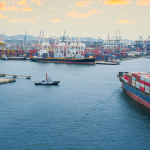A tried-and-tested tip for first-time exporters and importers.
While technology has empowered the logistics industry to surpass challenges and disruptions, there may still be other impediments when it comes to shipping renewables.
For example, in the case of shipping Solar PV modules, distance plays a vital role in determining the feasibility of the proposal. From coordination with multiple government bodies to shipping companies and third-party service providers, the list of checkboxes grows increasingly with the distance covered. So here’s how you can stay on top of things
Step 1: Plan your shipment
Elaborate planning makes for smooth and timely delivery. Get a firsthand picture of the best shipping route- land, sea or air? Understand the complexities involved at every step in the journey.
The challenge was to ship a large volume of fragile solar panels directly from their origin to the company’s gateways in the eastern part of the country, quickly and safely, amidst the COVID-19 pandemic.
Step 2: Hire a freight forwarder
The next step is to hire a freight forwarder that has proven capabilities in handling the complexities of solar module shipments. Compare notes to understand the scenario better.
Step 3: Ensure that everything is streamlined
After choosing the freight forwarder, ensure that all the necessary documents are streamlined. This includes commercial invoice, packing list, bill of lading, and packing declaration. Also, get an understanding of Incoterms and HS codes when shipping across borders. It will be beneficial for staying updated on tariffs and potential costs such as anti-dumping duties. Once everything is on track, schedule and commence your shipment.
Take your first step now that you have a solid understanding of the process. Though shipping solar PV modules may seem intricate, the right freight forwarder can serve as your trusted partner, ensuring seamless and timely delivery by guiding you every step of the way.


